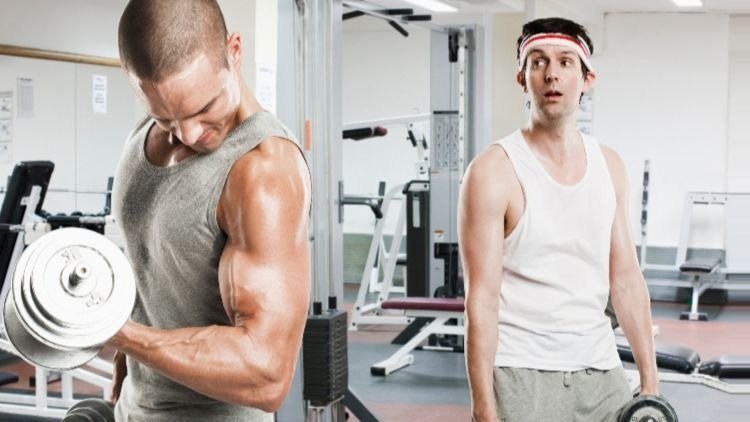Photo: Paul Bradbury (Getty Images)
My struggle with body dysmorphia is admittedly cliché. I was 14 years old and came upon a copy of Muscle & Fitness magazine. The standard ripped and massive bodybuilder on the cover caused me to question my self perception. Something in my head told me that since I was now at the age where I could put on muscle, I should look like the cover models.
Beyond the aesthetic, however, the articles and training guides offered me something everyone wants: control. The men pictured weren’t just physically strong, but they were confident as hell. They looked like their physique gave them some kind of superpower transforming them into the real life heroes.
After years of binging to “bulk up,” denying myself food to stay “ripped,” and 4-hour workouts, I’m conscious about my relationship with my body. Even today, I’d love to be taller and more ripped.
Get Fitter, Faster: Gadgets To Up Your Workout Game
I’m like the roughly 7 million other people in the U.S. who also suffer from body dysmorphic disorder, defined as “persistent and intrusive preoccupations with an imagined or slight defect in one’s appearance.” While the stereotype of someone with body image problems is typically a young woman with an eating disorder, wanting to lose weight is a common goal of both men and women. Men are just as likely to develop a problematic relationship with their body as women are.
Fellas, it’s clear we need to have a conversation about our own unique problems with who we see in the mirror. That means admitting some hard truths to ourselves. Here are a few points to get us started.
The “Right” Kind of Man
While most men won’t want to admit they’ve been susceptible to cultural programming since they were kids, the truth is society places a lot of expectations on us to be the “right” kind of man. We’re not supposed to show pain and are supposed to be able to handle anything that comes our way.
How many times did you hear some variation of “don’t be a sissy” growing up? In terms of our bodies, boys are told this means having lots of lean muscle and a broad figure. Even our action figures were part of our conditioning, with models getting bigger muscles every year. This early body standard combined with a “no pain allowed” attitude leads to a brutal combination down the line.

We’re Doing This to Ourselves
Ask dudes why they hit the gym so much, and they’ll probably laugh and say it’s to get laid. If you’ve ever been in a locker room, though, you’ll know the biggest admirers of a man’s intricate lat spreads and striations are platonic male friends. Since our bodies aren’t under the same scrutiny as women’s in terms of politics or perfection, it’s important to focus on how we talk about bodies.
We have the privilege to push discourse towards a positive change in body standards. The popularity of “dad bods” was funny, but it opened up a great dialogue about what an acceptable male body is. If we pushed that even further across body types and genders, we’d make some great progress.
A Different Kind of Strength Training: Kegel Exercises For Men
Our Lives are at Stake
Suicide is the 7th leading cause of death for men. Not only that, men kill themselves 3.53 times more often than women. Now, I’m not saying that male body dysmorphia is causing men to be suicidal. However, it’s clearly part of the greater problem where men can’t share their pain or vulnerability. By forcing guys into boxes of unrelenting toughness, we’re denying them any chance of getting help when they need it most.
If you or anyone you know is struggling with body dysmorphia, reach out for help. The Body Dysmorphic Disorder Foundation is a wonderful resource that can help you locate the help you may need.






